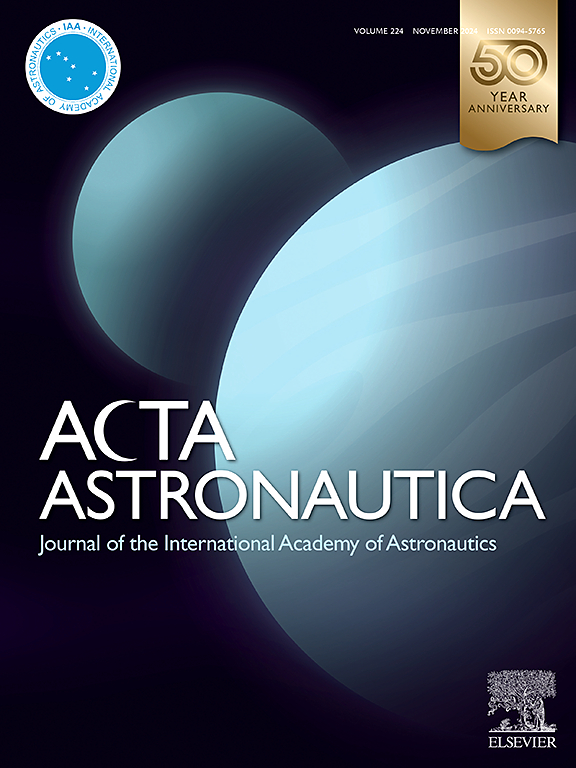基于改进无单元伽辽金法的抛物面膜反射器形状优化及实验研究
IF 3.4
2区 物理与天体物理
Q1 ENGINEERING, AEROSPACE
引用次数: 0
摘要
本研究旨在对抛物膜进行表面精度分析和形状优化,以获得精确的几何表征。基于非线性应变-位移关系,采用无网格法建立了膜反射器在曲线坐标下的数学模型。在无单元Galerkin框架内,采用移动最小二乘法生成形状函数,采用笛卡尔变换方法增强积分策略,有效消除了冗余刚度矩阵计算。几何非线性通过增量牛顿-拉夫森迭代方案解决。该优化模型成功地确定了反射镜的最佳初始焦距和相应的裙摆几何形状。最后,利用热成型曲面膜和设计的ECDMA样机对夹边膜反射器和裙边膜反射器进行了静电测试实验,验证了所提分析和优化方法的有效性。本文章由计算机程序翻译,如有差异,请以英文原文为准。
Shape optimization and experiments of a paraboloidal membrane reflector using an improved element-free Galerkin method
This study aims to enable surface accuracy analysis and shape optimization of parabolic membranes for accurate geometric representation. Based on the nonlinear strain-displacement relationship, a mathematical model of the membrane reflector in curvilinear coordinates was developed using the meshless method. Within the element-free Galerkin framework, the moving least squares method was employed to generate shape functions, and the Cartesian transformation method was adopted to enhance the integration strategy, effectively eliminating redundant stiffness matrix calculations. Geometric nonlinearities were addressed through an incremental Newton-Raphson iteration scheme. The proposed optimization model successfully determined the optimal initial focal length of the reflector and the corresponding skirt geometry. Finally, electrostatic testing experiments were conducted on both clamped-edge membrane reflectors and skirted membrane reflectors using thermoformed curved membranes and the designed ECDMA prototype, demonstrating the effectiveness of the proposed analysis and optimization methods.
求助全文
通过发布文献求助,成功后即可免费获取论文全文。
去求助
来源期刊

Acta Astronautica
工程技术-工程:宇航
CiteScore
7.20
自引率
22.90%
发文量
599
审稿时长
53 days
期刊介绍:
Acta Astronautica is sponsored by the International Academy of Astronautics. Content is based on original contributions in all fields of basic, engineering, life and social space sciences and of space technology related to:
The peaceful scientific exploration of space,
Its exploitation for human welfare and progress,
Conception, design, development and operation of space-borne and Earth-based systems,
In addition to regular issues, the journal publishes selected proceedings of the annual International Astronautical Congress (IAC), transactions of the IAA and special issues on topics of current interest, such as microgravity, space station technology, geostationary orbits, and space economics. Other subject areas include satellite technology, space transportation and communications, space energy, power and propulsion, astrodynamics, extraterrestrial intelligence and Earth observations.
 求助内容:
求助内容: 应助结果提醒方式:
应助结果提醒方式:


